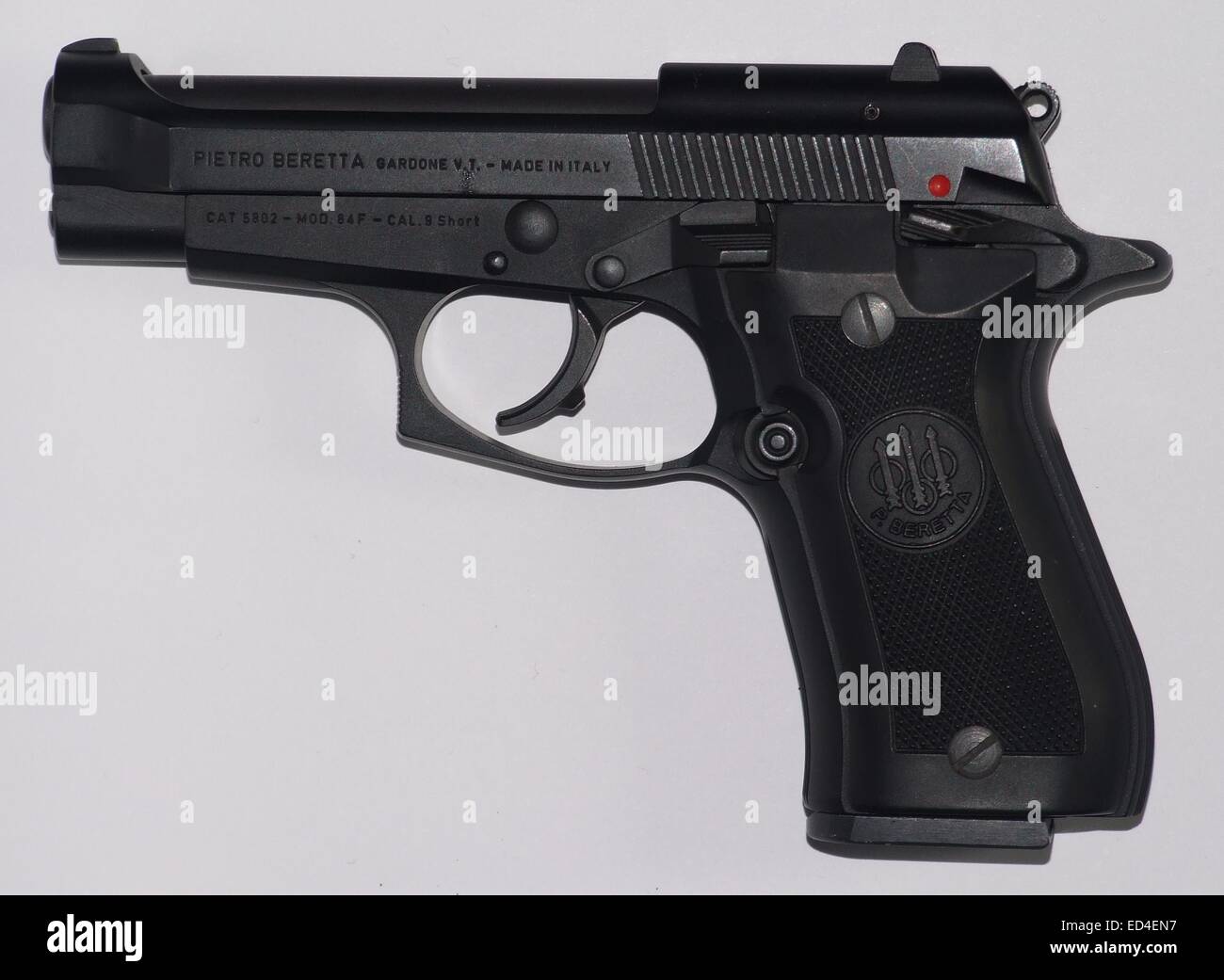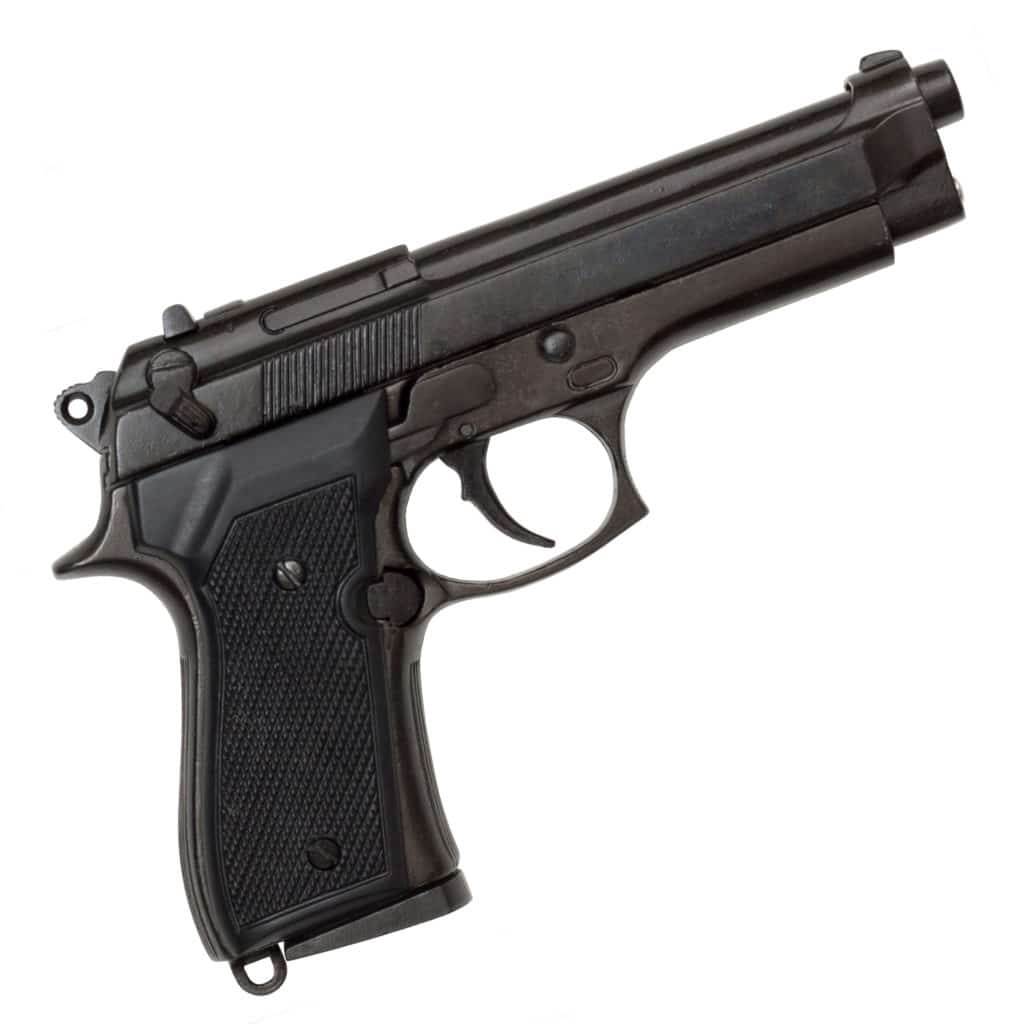Is Beretta Italian - Here's what you need to remember: At nearly five hundred, the company is the world's oldest firearms maker—and it's still better than ever.
It cannot be denied that Italians are often called lovers, not fighters, and are characterized by taking long vacations and not working hard. However, the people at Fabbricad'Armi Pietro Beretta would have reason to dispute this fact. The company was founded in 1526 - more than thirty years since Columbus "discovered" America - making it one of the oldest continuously operating companies, the oldest family-owned business and arguably one of the oldest gun manufacturers in the world.
Is Beretta Italian

Although the company has been known for centuries for its tactical weapons, including hunting rifles and shotguns, it has had a long-standing relationship with the world's militaries. According to the company, it first made cannon barrels for Venetian ships, which were used in the Battle of Lepanto in 1571, and Beretta has provided weapons for every major European war since the mid-seventeenth century.
The Italian 1911
During World War I, the Beretta Model 1918 was one of the first submachine guns—and it is still debated whether it preceded the German MP18. During the Fascist era, it produced weapons for the Italian Imperial Army, including the Modello 38 (Model 38), an innovative submachine gun. Instead of having a fire selector, it had two triggers - one for semi-automatic fire and the other for full automatic fire. The weapon, which was chambered for the 9x19mm Parabellum round, was also used by the German Waffen-SS as well as the Romanian Army and was used post-war in the Algerian War and the Congo Crisis.
The Beretta 92 9mm pistol had the unique distinction of being the pistol that replaced the popular Colt M1911 .45 revolver. It was selected as a service pistol for the US Army under the designation "M9 Pistol". The Italian arms manufacturer received the first 450,000 pistols in January 1945 after a controversial competition that had lasted over a decade.
However, since its inception, the Beretta has been seen to have several disadvantages including size and weight, while the exposed breetta, which can fail and must be replaced every five thousand rounds, has also proved to be a major issue. For these and other reasons, in the mid-2010s, the Army began looking for a replacement, even as Beretta launched the newly redesigned M9A3.
Beretta claimed that the new pistol solved many of the problems with older models. "The M9A3 Beretta looks like a futuristic, high-tech version of its Reagan-era predecessors, which it is. The A3 is finished in a three-color scheme of earth black, coyote and flat dark, unlike the flat black of the M9,
Beretta 92fs Stainless 9mm Pistol
The A3 has "stronger lines" than the original Beretta, with a flat base that eliminated the bulge in the rear strap, creating an angular grip reminiscent of the M1911A1. However, this was not enough to keep the US military interested, but the M9A3 is available on the civilian market.
Although Beretta's day with the US military may be over, this company has seen the unification of Italy, the rise and fall of Benito Mussolini, endured many wars and even Italian socialism. Berettas will be around when today's handguns are dead and buried.
Peter Suciu is a Michigan-based writer who has contributed to more than four dozen newspapers, magazines and websites. He is the author of several books on firearms, including The Beretta 92 (also Beretta 96 and Beretta 98) is a series of semi-automatic pistols designed and manufactured by Beretta of Italy. The Beretta 92 was designed in 1975 and production began in 1976. Many models in several different calibers continue to be used for the first time.
The US Army replaced the .45 ACP M1911A1 pistol in 1985 with the Beretta 92FS, designated "M9".
Italian Police Beretta 92s
The Beretta 92 pistol was based on earlier Beretta models, particularly the M1923 and M1951. From the M1923 comes the design of the slide action, while the alloy frame and barrel block, originally from the Walther P38, was first used in the M1951. The grip and fore-end integrated with the slide were also common to early Beretta pistols. Perhaps the two most important design features of the Model 92 were first seen in its immediate predecessor, the .380-caliber Model 84 of 1974. These improvements included both magazines, which had one for one; that is, there was no feed ramp (a Beretta innovation in pistols) between the magazine and the chamber. Additionally, the magazine was a "two-stage" design, a feature first introduced in 1935 on the Browning Hi-Power.
Carlo Beretta, Giuseppe Mazzetti and Vittorio Valle, experienced gun designers, contributed to the final design in 1975.
Production began in May 1976 and ended in February 1983. Approximately 7,000 units were of the first "action slide" model and 45,000 were of the second "direct slide" model.
To meet the needs of some law enforcement agencies, Beretta modified the Beretta 92 by adding a safety lever mounted on the slide and choke, and replacing the thumb safety mounted on the frame. This resulted in the 92S, which was adopted by several Italian law and military units. The magazine release button is at the bottom of the grip, as is common in Europe. This model was produced from 1978 to 1982.
Italian Police Surplus Beretta 92s, Who Got One?
The 92SB, originally designated the 92S-1, was specifically designed for the USAF trials (which it won), the officially approved model designation being the 92SB. Added features include a firing pin (hence the addition of the "B" to the name), bidirectional safety inserts, 3-point sights, and the relocation of the magazine release catch from the end of the grip to the lower end of the trigger. guard. . The later relocation of the magazine release button means that earlier models (92 and 92S) cannot use later magazines, unless they have a dot in both places.
A compact version with a shortened barrel and slide and a 13-round magazine capacity known as the 92SB Compact was produced from 1981 to 1991.
Beretta 92F 9mm Parabellum pistol, gold plated, diamond crust, with matching suppressors, seized from Joaquín "El Chapo" Guzmán's warehouse. (Source: Medical Corps Administration Museum and Visitor Center)

In 1984 Beretta introduced a slightly modified version of the Model 92SB to create the 92SB-F (the "F" was added to test the model in US government testing) making the following changes:
Beretta 92fs, Italian
The French Army adopted a modified version of the 92F with only a recoil lever as the PAMAS G1. These pistols have tellurium in the slide, making the metal brittle, resulting in a life of about 6,000 rounds.
The 92FS has a large hammer pin that fits into a groove in the bottom of the slide. The main purpose is to prevent the slide from flying from the frame to the rear if it breaks. This was based on reports of defective slides during US military testing.
The 92FS also came as a 92FS Cturion model that had a shorter barrel and a 92 Compact slide in a full-size 92FS frame.
The Beretta 92's optical slide design ensures smooth feeding and ejection of ammunition and allows for easy removal of obstructions. The hard chrome barrel opening reduces barrel wear and protects it from rust. Anti-fall lock design ensures accuracy and smooth operation with suppressors due to barrel linear movement. This is in contrast to the stiff travel of Browning's designed barrels. The magazine release button can be reversed with simple field tools. Changing the magazine release makes left-handed operation easier.
Beretta Usa Js92f520 92 Fs Italy Inox 9mm Luger 4.90″ 10+1 Stainless Steel Black Synthetic Grip
Increasingly, it has become popular to reduce the weight and cost of weapons, as well as increase corrosion resistance by using polymers. Starting around 2000, Beretta began replacing some parts with polymer and polymer-coated steel. The polymer parts include the spring guide rod (which is now also tapped), the magazine floor plate, the magazine follower, and the main cover/strap. Polymer coated metal parts include the left side safety lever, trigger and magazine release button.
In order to continue to comply with the introduction of laws in some countries that restrict magazines that hold more than 10 rounds, Beretta now manufactures magazines that have less than 15 rounds of the factory standard. These magazines have heavy crimps (deeper inserts) to reduce the available space while maintaining the same external dimensions and ensuring that these magazines can be used in existing weapons. Beretta also manufactures 15-round "Sand Resistant" magazines to solve problems encountered with the contractor-made magazines and 17-round magazines included in the A1 models. Both magazines work in the original series 92 and Model M9 pistols.
Italian magazine maker Mec-Gar now makes blued and nickel finished magazines with an 18-round capacity that fit neatly into the magazine in the 92 series. Mec-Gar also makes an extended blued 20-round magazine that protrudes below the frame by 3 ⁄ 4 inches (19 mm). These magazines provide users in unlimited countries
Where is beretta made, where is the beretta factory in italy, beretta italian, beretta 92fs inox italian, which is better glock or beretta, is beretta a good gun, how much is a beretta, what language is italian, where is beretta usa located, what does beretta mean in italian, italian made beretta, where is beretta guns made


0 Comments